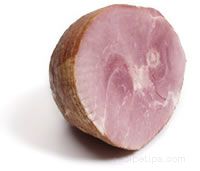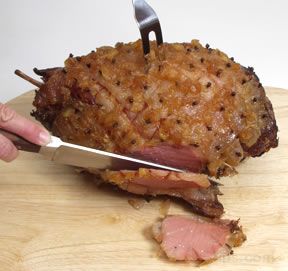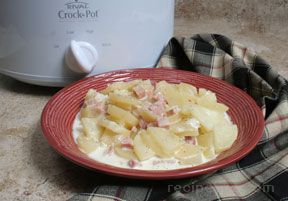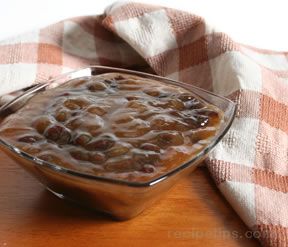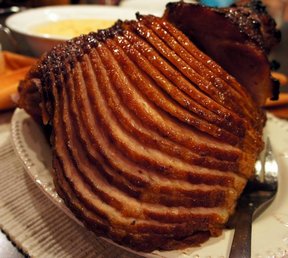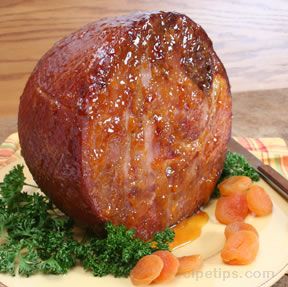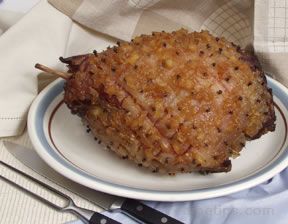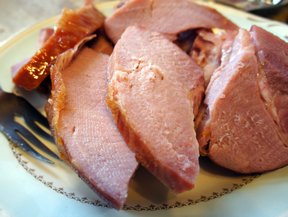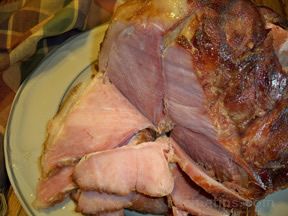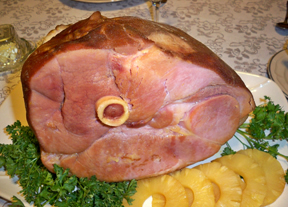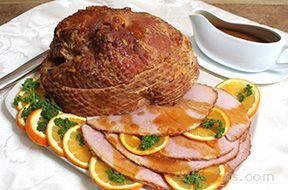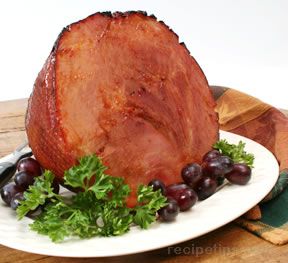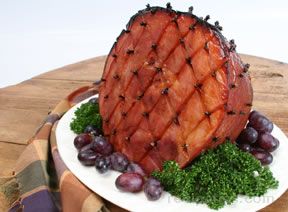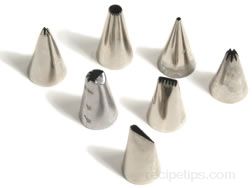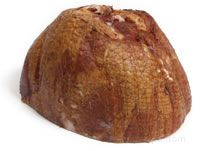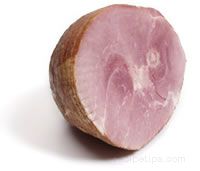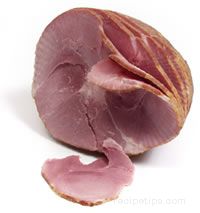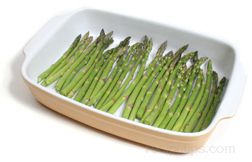- To make clean up easier, line your roasting pan with aluminum foil.
- Do not add water to the roaster.
- To avoid drying out ham, cook slowly at 325ºF. Allow 20 to 30 minutes per pound for ham that has not been precooked (follow directions on label for precooked hams).
- Begin roasting ham by placing fat side up, the melting fat will baste your ham. Turn ham over half way through baking to avoid uneven salting from the brine in the meat.
- For a crisp surface on your ham roast, be sure the oven is preheated before placing the roast into the oven in an uncovered pan.
- Do not use sharp utensils that may pierce the ham when trying to turn it. The piercing allows valuable juices to escape. Use other utensils, such as wooden spoons and spatulas for turning the meat.
- Do not overcook pork or it will become dry and tough. The threat of trichinosis is eliminated when the pork is heated to 137°F but the USDA recommends cooking pork to 160°F to be safe. Cooking to 160°F will result in clear or slightly pink tinted juices from the juicy and tender meat.
- After ham has completed roasting, take ham out of oven and let stand 15 minutes before slicing. Ham will continue to bake when out of the oven and letting ham stand for 15 minutes makes it easier to carve.
- Do not partially cook pork and then store in refrigerator to use later. It must be cooked until done.
Check for Doneness
Using a thermometer is the most accurate method for testing doneness. A regular meat thermometer is inserted before placing the meat in the oven or other heat sources and it remains there throughout the cooking time. An instant read thermometer is used to check for the proper temperature once the meat has been cooked. The meat is removed from the heat source and the instant read thermometer is inserted into the thickest part of the meat to provide a temperature reading in approximately 15 seconds. When either type of thermometer is inserted into the meat, it must not be touching a bone or it will result in an inaccurate reading.
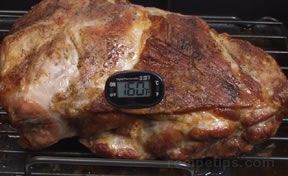 |
Remove the ham when it has reached a temperature that is 5 to 10 degrees lower than the recommended temperature for doneness (refer to chart below). During the 10 to 15 minute resting period, the ham will continue cooking and will reach the proper temperature. Following this method will ensure that the meat will not be overcooked.
|
|
Internal Temperatures for Proper Doneness | |
|
Fresh Hams |
160° - 170°F |
| Whole Leg or Half Leg | 160° - 170°F |
| Smoked Whole or Half Ham | 160°F |
| Smoked and Fully Cooked Ham | 130° - 140°F |
Jazz it up
If you purchase a ham that has not been pre-glazed, jazz it up! Create a ham glaze to enhance the flavor.
- Mix equal amounts (approx. ¼ cup, depending on size of ham) of powdered mustard and brown sugar. Sprinkle mixture over ham surface for the final 30 minutes of cooking.
- Mix equal amounts (approx. ¾ cup, depending on size of ham) orange juice, and pear juice. Baste ham twice within the first 15 minutes of baking.
- Mix equal amounts (approx. ¾ cup, depending on size of ham) of brown sugar and honey. Brush sugar and honey mixture over ham during the last ½ hour of baking.
- Mix 1 cup of raspberry preserve (or cherry, apricot, etc) with ½ cup of light corn syrup. Mix until well blended and brush on ham during the last 15 to 30 minutes of baking.
For more information on baking ham, see the Ham Cooking Guide.






